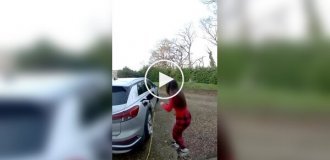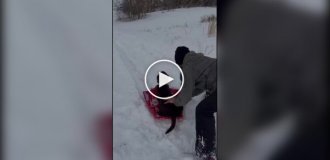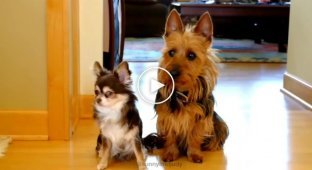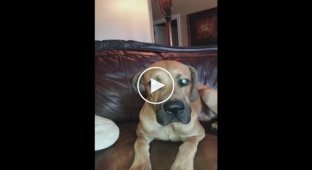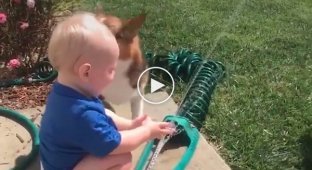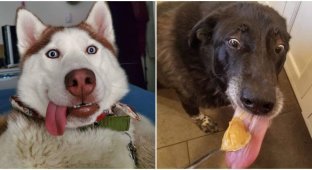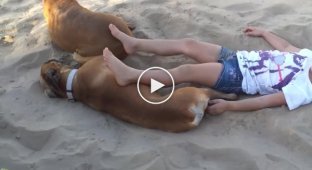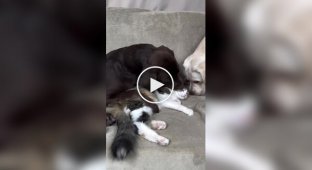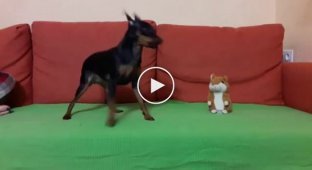Why do dogs have shameless weddings, but wolves don’t? (6 photos)
Wolves and dogs are incredibly similar, they are related after all. And I’m not talking about appearance now; a chihuahua next to an Arctic wolfdog is quite worthy of being a separate species. I mean behavior: they fight and make up the same, groom the coat the same and have an almost identical set of non-verbal signals and emotions. But against this background, the differences look even more striking. 
Yes, descendants, shame on you.
That’s why, for example, during the mating season, dogs organize bacchanals that make the whole city tremble, while wolves choose their mate relatively calmly? 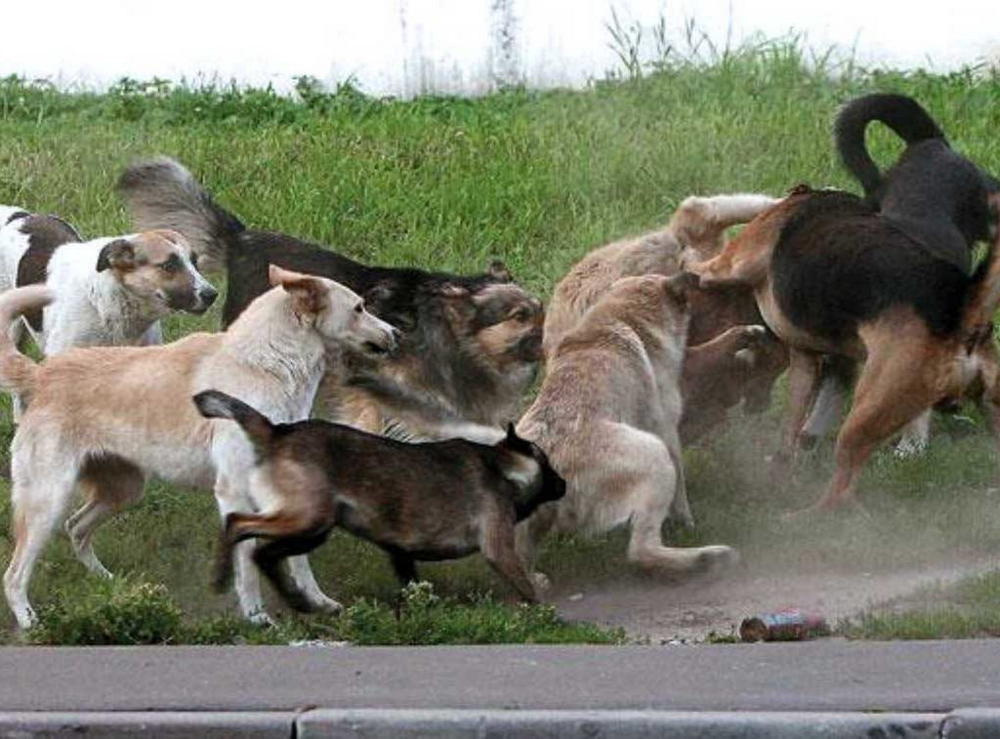
If you see such a commotion, stay away, everyone there is already on edge...
This and dozens of other questions about the differences between dogs and their forest relatives have the same answer. Dogs are more social animals than wolves. Through selective breeding, humans have tweaked the genes of their pets: lowered their hormonal levels and raised their social skills to new heights. 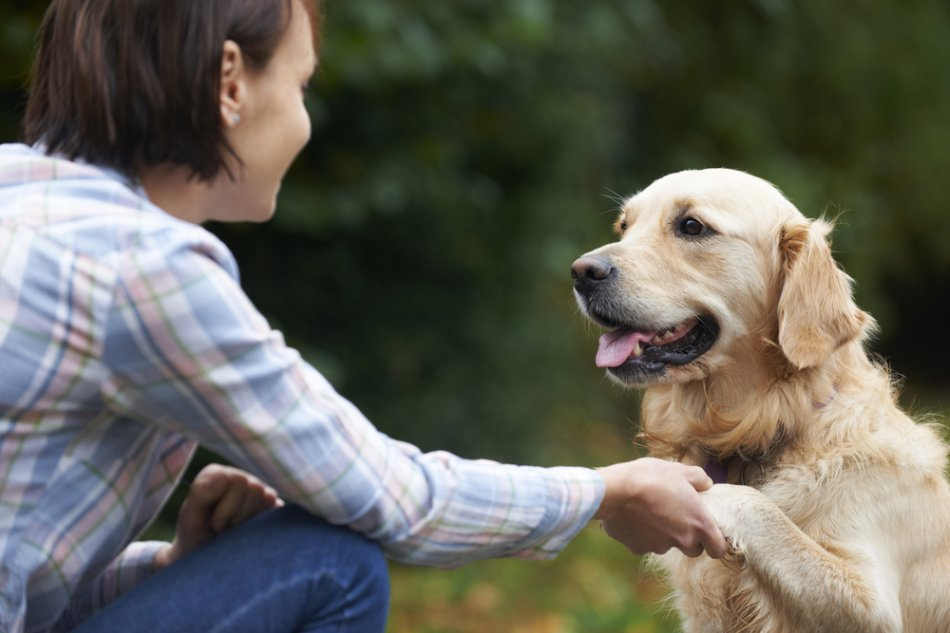
Social skills in canine populations were established very simply and independently of each other. The better a dog understands the feelings and emotions of its owner, the better it understands commands, and the more likely it is that the person will allow him to have offspring.
As a result, the organization of the dog pack itself changed. The stray dog community is a complex and flexible hierarchy, in which the rights and responsibilities of the dominant dog change every week, as does the owner of this title. Factions and friendly alliances constantly arise within the group, and weak and sick animals may be subjected to humiliation. But they are not leaving the flea community. A single dog is very vulnerable to the nature of landfills and concrete jungles. In general, the pack of dogs began to resemble a group of primates in many ways. 
Whoever you hang out with, that's how you'll gain.
Wolves have a different way of life. And their flocks are smaller, usually from 3 to 8 individuals, and they are structured completely differently. The core of a wolf pack is the parent couple, the oldest, strongest and most skilled animals, to whom the rest of the gang listens. Basically, the flock consists of their offspring aged from 1 to 3 years. Sometimes wolves without a mate join the pack. No alphas and omegas. If a wolf is bullied, he will simply leave the pack and go to seek his happiness somewhere else. 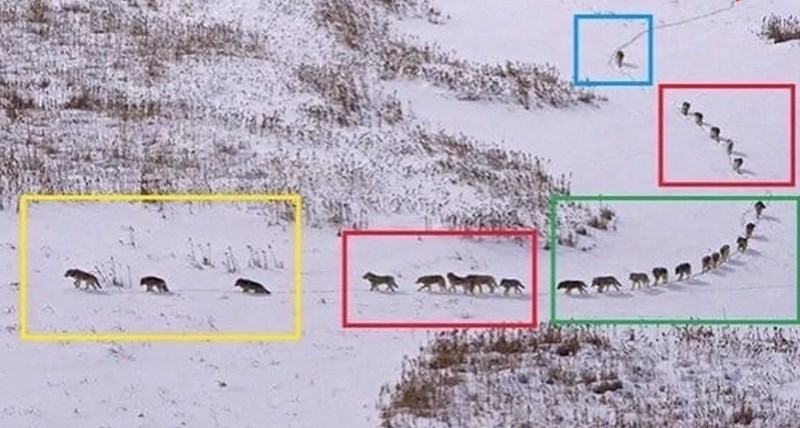
In the photo: the movement of a pack of wolves: the first three (yellow frame) are old or sick, they go ahead and set the speed of the entire pack. If they pass behind, they will fall behind and die. Behind them are five strong wolves (red frame). In the center (green frame) are the rest of the pack, then the five strongest (red frame). Last comes the leader, who controls the entire flock. The pack moves so that the oldest ones do not lag behind, and in order to be able to help each other.
The concepts of “alphas,” “betas,” and “omegas” in a wolf pack were formed based on observation of animals in captivity. The study group consisted of several unrelated wolves who had to somehow arrange a common life. In reality, such situations are impossible.
Since the wolf pack is based on family, they take a serious approach to family relationships. Partners carefully choose each other, get used to each other, and only then have children. But dogs are driven by more complex and ephemeral matters: the desire to survive, a sense of security and a thirst for power. Therefore, they devote less time to reproduction, and pairs among the “savages” occur extremely rarely. 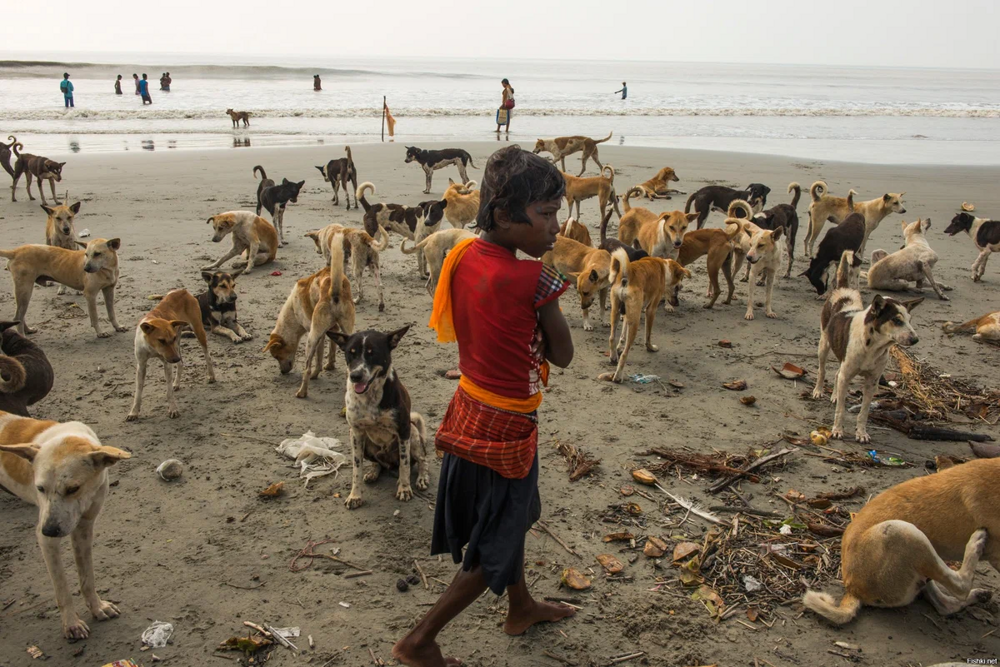
There are especially many feral dogs in poor countries with a subtropical climate. In these regions, stray dogs can survive for centuries, so they form stable populations of animals that have never known contact with a loving person. However, even such packs do not return to the wolf format of life.
But a female in heat attracts a lot of males, who create a temporary pack around her, and this is how a dog wedding turns out. Each dog tries to earn the favor of the female by force or loyalty, so that by the time of mating he will be first on the list of candidates. Hormones are gushing through the ears, aggression is off the charts, each participant expects danger and meanness. Therefore, it is not surprising that love-crazed dogs sometimes lash out at pet dogs, children and women. To the victims of bloody weddingsThis, of course, doesn’t make it any easier.

